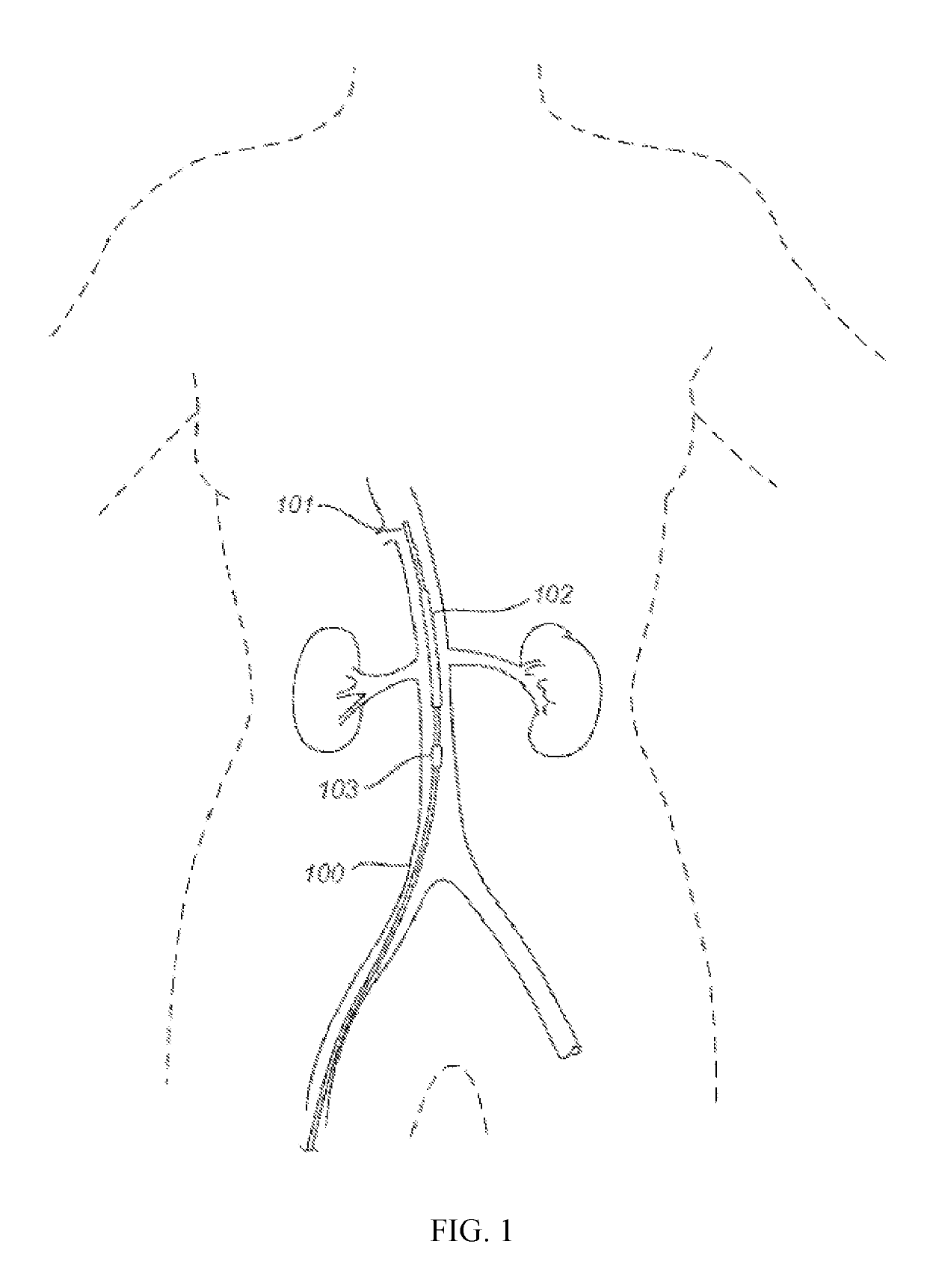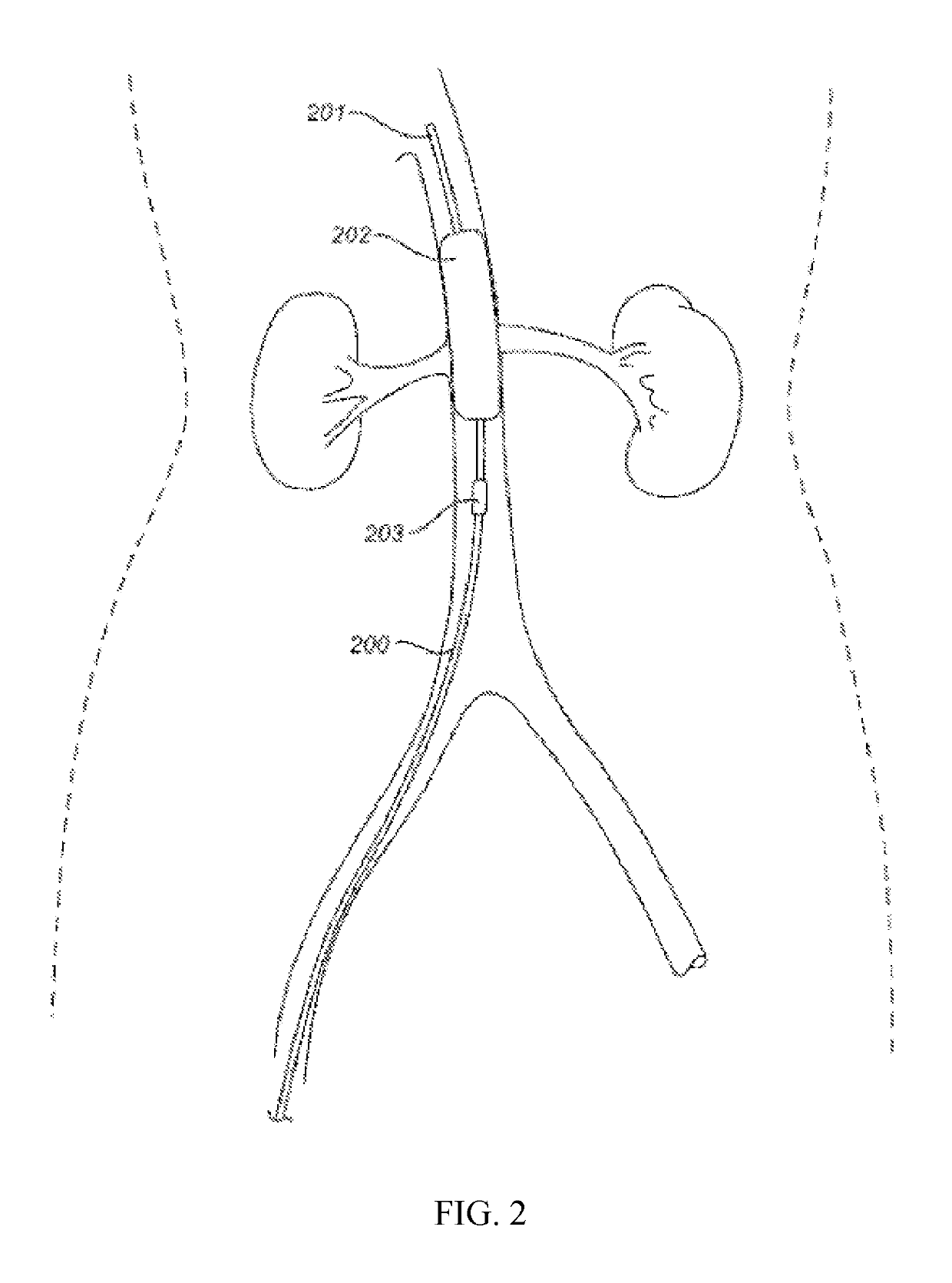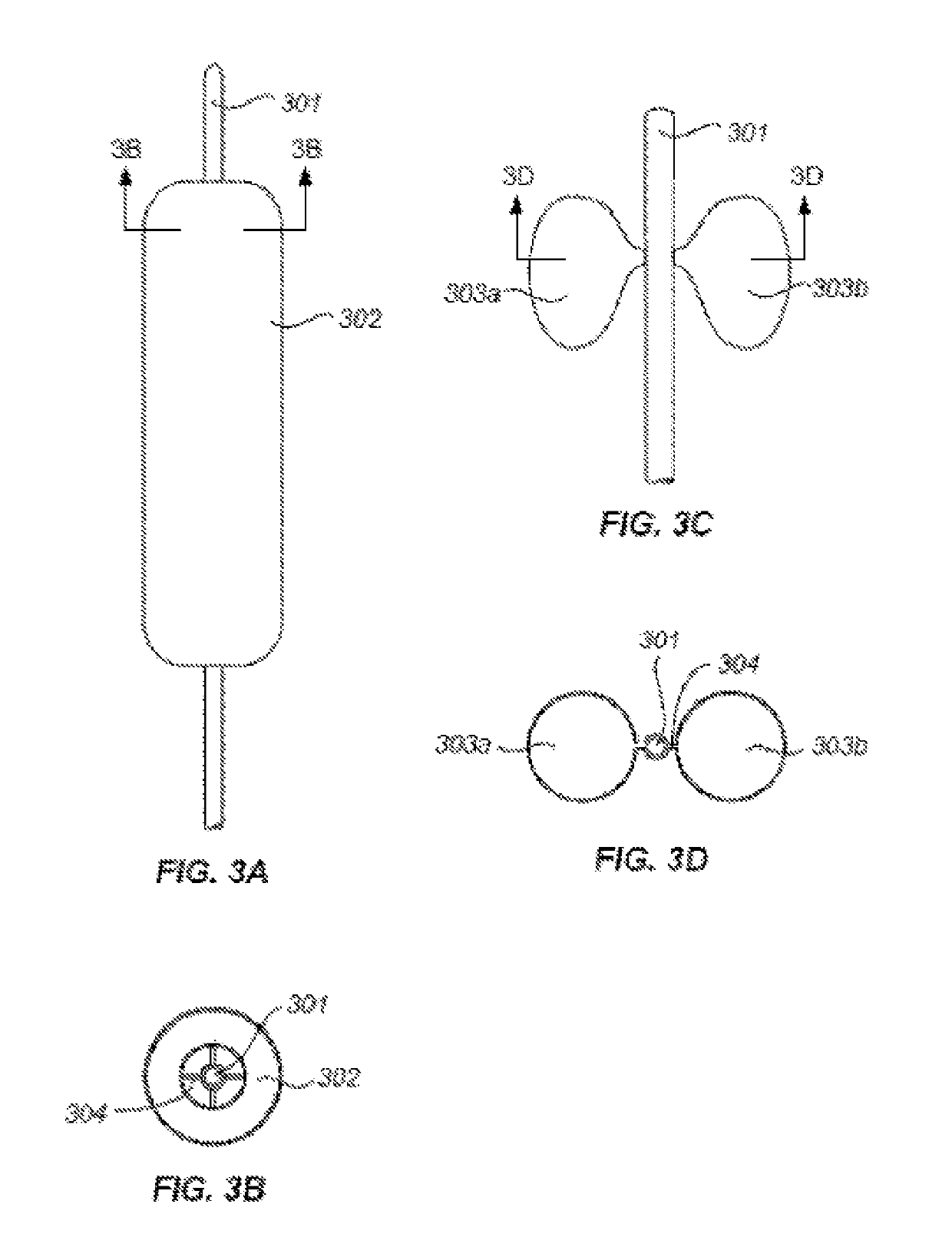Devices and methods for treating acute kidney injury
a kidney injury and device technology, applied in the field of acute kidney injury devices and methods, can solve the problems excessive hospitalization cost, morbidity and mortality, and the inability to improve the outcome of intensive renal replacement therapy with cvvh, so as to reduce the risk of acute kidney injury, avoid renal ischemia, and improve the effect of renal function
- Summary
- Abstract
- Description
- Claims
- Application Information
AI Technical Summary
Benefits of technology
Problems solved by technology
Method used
Image
Examples
Embodiment Construction
[0042]Current treatments / managements for acute kidney injury (AKI), especially contrast-induced acute kidney injury are mainly supportive. They include for example, (1) evaluating and stratifying patients with Mehran risk score before performing percutaneous coronary intervention (PCI), (2) avoiding high-osmolar contrast media by using low-osmolar or iso-osmolar contrast media, (3) reducing the amount of contrast media during PCI, and (4) applying intravenously isotonic sodium chloride solution or sodium bicarbonate solution hours before and after PCI, (5) avoiding use of nephrotoxic drugs (such as nonsteroidal anti-inflammatory drugs, aminoglycosides antibiotics, etc.) See Stevens 1999, Schweiger 2007, Solomon 2010. However, none of them were proven with consistent effect in preventing CI-AKI.
[0043]Provided herein are devices and systems that specifically focus on solving the two main pathophysiological culprits of CI-AKI, which are renal outer medulla ischemia and / or prolonged tra...
PUM
 Login to View More
Login to View More Abstract
Description
Claims
Application Information
 Login to View More
Login to View More - R&D
- Intellectual Property
- Life Sciences
- Materials
- Tech Scout
- Unparalleled Data Quality
- Higher Quality Content
- 60% Fewer Hallucinations
Browse by: Latest US Patents, China's latest patents, Technical Efficacy Thesaurus, Application Domain, Technology Topic, Popular Technical Reports.
© 2025 PatSnap. All rights reserved.Legal|Privacy policy|Modern Slavery Act Transparency Statement|Sitemap|About US| Contact US: help@patsnap.com



